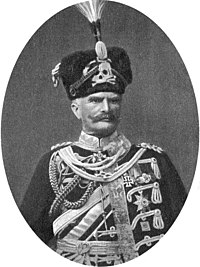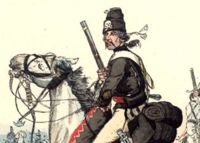No products
Best sellers
-

WW2 - SS Officer Visor Cap Skull with Eagle - Metal
Recommended by us due to the High Quality and detail of this product....
£ 19.99 -

WW2 - SS Officer Visor Cap Skull - Superior
Recommended by us due to the High Quality and detail of this product....
£ 11.99 -

WW2 The Knights Cross of the Iron Cross - in Gold
Recommended by us due to the High Quality and detail of this product....
£ 24.99 -

WW2 Iron Cross with Oak Leaves and Swords,included Ribbon - SUPERIOR
Recommended by us due to the High Quality and detail of this product....
£ 19.99 -

WW2 N.S.D.A.P - Golden Party Badge
Full size type,numbered and marked to The Golden Party Badge....
£ 17.99 -

WW2 - Luftwaffe Officer Visor Cap Eagle
Recommended by us due to the High Quality and detail of this product....
£ 12.99 -

WW2 - SS Officer Visor Cap Eagle - Superior
Recommended by us due to the High Quality and detail of this product....
£ 11.99 -

WW2 German U-Boat War Badge - in Silver
Recommended by us due to the High Quality and detail of this product....
£ 13.99 -

WW2 - SS Skull Badge - ( Mine Honor is True Jewelry )
Recommended by us due to the High Quality and detail of this product....
£ 12.99 -

WW2 The Knights Cross of the Iron Cross - in Silver
Recommended by us due to the High Quality and detail of this product....
£ 24.99
ww2 German Cap Insignia - Metal
No manufacturer
-

WW2 - Officer Visor Cap - Wool Insignia
£ 5.99 £ 8.99
No supplier
Viewed products
-

WW2 - SS Officer Visor...
Recommended by us due to the High...
-

WW2 - Luftwaffe...
Recommended by us due to the High...
 View larger
View larger
WW2 - SS Officer Visor Cap Skull with Eagle - Metal
New product
Recommended by us due to the High Quality and detail of this product.
Will not be disappointed with the quality of item.
---Looks Like Orginal---
Stamped like the orginals,markings on reverse.
This product is no longer in stock
More info
Totenkopf (lit. "skull") is the German word for the skull and crossbones and death's head symbols. The Totenkopf symbol is an old international symbol for death, the defiance of death, danger, or the dead, as well as piracy. It consists usually of thehuman skull with or without the mandible and often includes two crossed long-bones (femurs), most often depicted with the crossbones being behind some part of the skull.
It is commonly associated with 19th- and 20th-century German military use. Prominent use of the symbol by Nazi SS forces during World War II as German Einsatzgruppendeath squads undertook the Holocaust caused a widespread decline in its use and a secondary association with political extremism, although several groups and individuals continued using it despite the linkage (or, in some cases, welcoming it.)
Etymology
Toten-Kopf translates literally to "dead's head", construed broadly as a "dead person's head". Semantically, it refers to a skull, literally a Schädel. As a term, Totenkopf connotes the human skull as a symbol, typically one with crossed thigh bones as part of a grouping.
Contemporary German language meaning of the word Totenkopf has not changed for at least two centuries. For example, the German poet Clemens Brentano wrote in the story "Baron Hüpfenstich":
"Lauter Totenbeine und Totenköpfe, die standen oben herum ..."(i.e. "A lot of bones and skulls, they were placed above ...").
The common translation of "Totenkopf" as death's head is incorrect; it would be Todeskopf, but no such word is in use. The English term death squad is called Todesschwadron, not Totenschwadron. It would be a logical fallacy to conclude that usage varies only because of the German naming of the Death's-head Hawkmoth, which is called Skull Hawkmoth(Totenkopfschwärmer) in German, in the same way that it would be a fallacy to conclude that the German word Nachtkerze(i.e. night candle) would mean Willowherb, just because the Willowherb Hawkmoth is called Night Candle Hawkmoth(Nachtkerzenschwärmer) in German.
German military
Prussia
Use of the Totenkopf as a military insignia began under Frederick the Great, who formed a regiment of Hussar cavalry in the Prussian army commanded by Colonel von Ruesch, the Husaren-Regiment Nr. 5 (von Ruesch). It adopted a black uniform with a Totenkopfemblazoned on the front of its mirlitons and wore it on the field in the War of Austrian Succession and in the Seven Years' War.
The Totenkopf remained a part of the uniform when the regiment was reformed into Leib-Husaren Regiments Nr.1 and Nr.2 in 1808. When Frederick William, Duke of Brunswick-Wolfenbüttel, was killed in battle during the Napoleonic Wars, his troops changed their uniform colors to black or apple green, with a Totenkopf on their shakos in mourning their dead leader. Other sources claim that the "Black Brunswickers" were so equipped while Friedrich Wilhelm of Brunswick lived, as a sign of revenge on the French.
The skull continued to be used throughout the Prussian and Brunswick Armed forces until 1918, and some of thestormtroopers that led the last German offensives on the Western Front in 1918 used skull badges.
Weimar Republic
The Totenkopf was used in Germany throughout the inter-war period, most prominently by the Freikorps. In 1933, it was in use by the regimental staff and the 1st, 5th, and 11th squadrons of the Reichswehr 's 5th Cavalry Regiment as a continuation of a tradition from the Kaiserreich.
Third Reich
In the early days of the NSDAP, Julius Schreck, the leader of the Stabswache (Adolf Hitler's bodyguard unit), resurrected the use of the Totenkopf as the unit's insignia. This unit grew into the Schutzstaffel (SS), which continued to use the Totenkopf as insignia throughout its history. According to a writing by Reichsführer-SS Heinrich Himmler theTotenkopf had the following meaning:
The Skull is the reminder that you shall always be willing to put your self at stake for the life of the whole community.
The Totenkopf was also used as the unit insignia of the Panzer forces of the GermanHeer (Army), and also by the Panzer units of the Luftwaffe, including those of the eliteFallschirm-Panzer Division 1 Hermann Göring.
Both the 3rd SS Panzer Division of the Waffen-SS, and the World War II era Luftwaffe's 54th Bomber Wing Kampfgeschwader 54 were given the unit name "Totenkopf", and used a strikingly similar-looking graphic skull-crossbones insignia as the SS units of the same name.

Reviews
No customer reviews for the moment.



